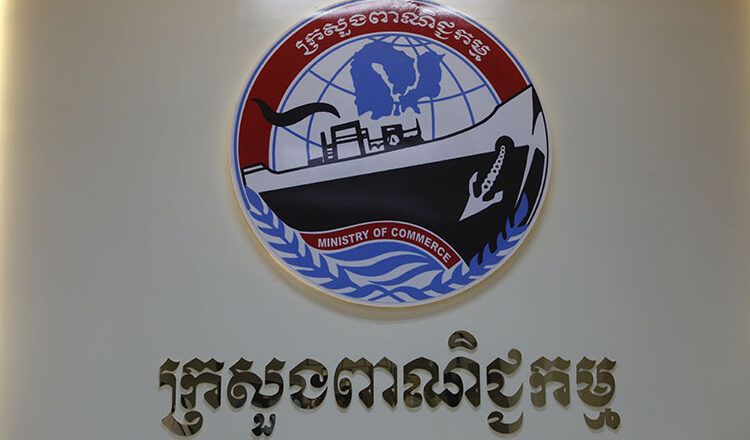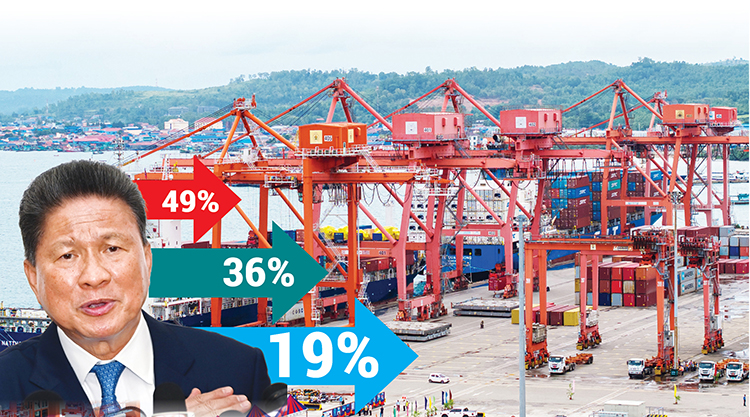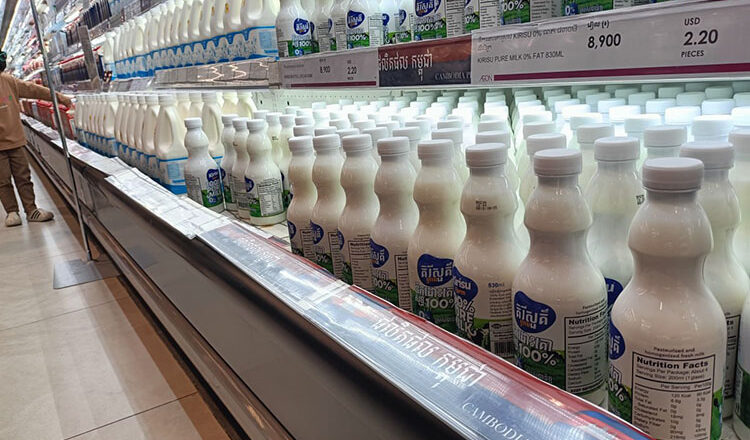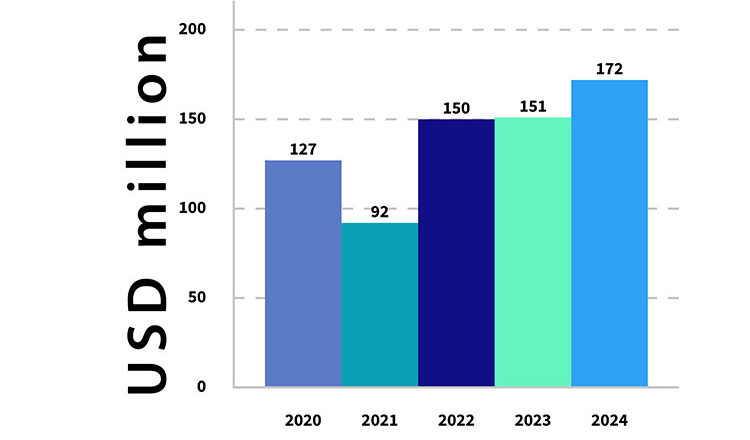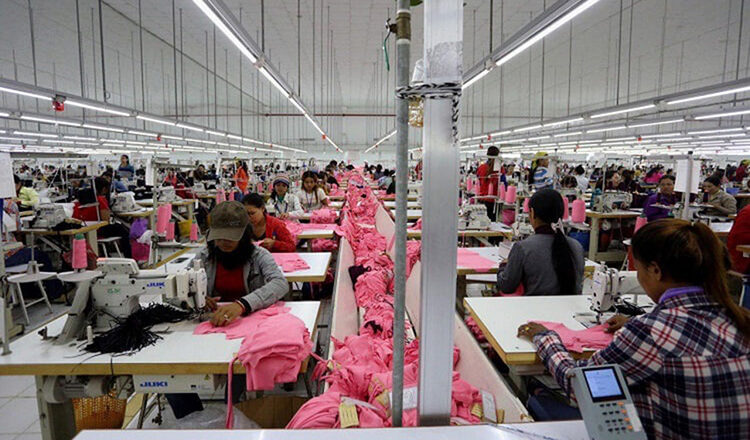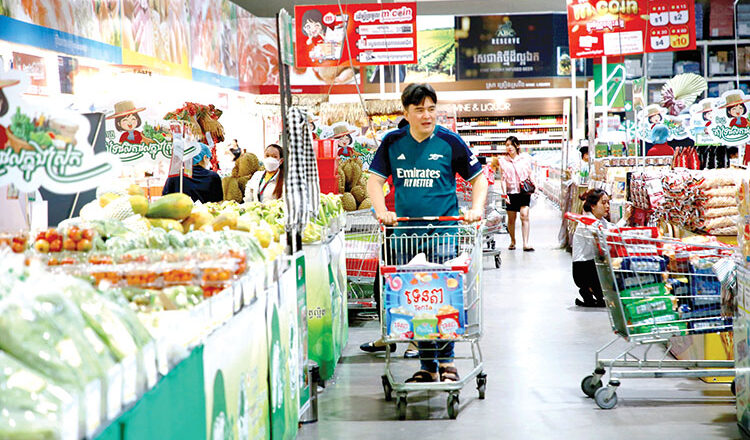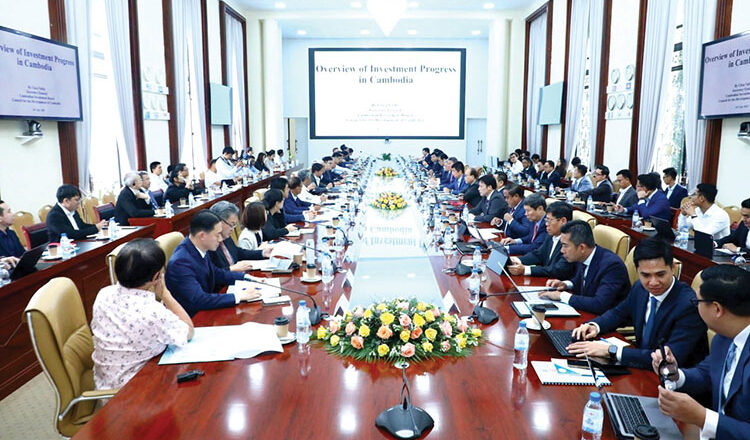Growth trajectory: Despite headwinds, Cambodia’s economy posts nearly 6% growth
Growth trajectory: Despite headwinds, Cambodia’s economy posts nearly 6% growth
While the Kingdom remains on a steady growth path, proactive policy measures are imperative to cushion the economy from external shocks.
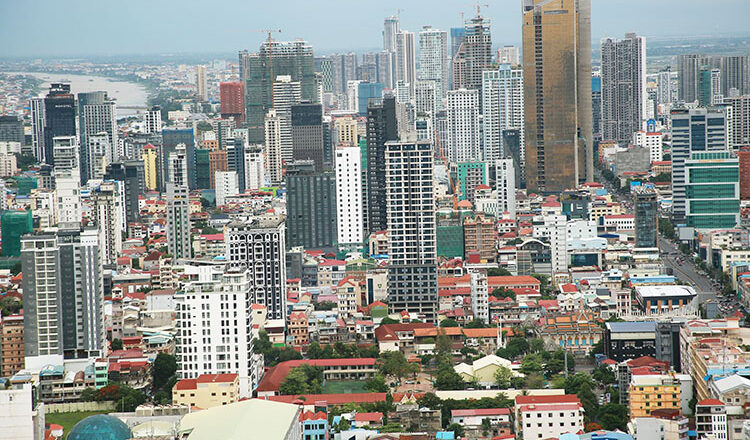
Cambodia’s economy expanded by 5.9 percent in the first half of 2025, underpinned by strong performance in the manufacturing, tourism, and agricultural sectors, according to the National Bank of Cambodia’s (NBC) First Semester Report and Work Direction for the Second Semester, released on Monday.
Despite the positive growth, NBC noted that the Cambodian economy continues to face mounting uncertainty, in line with global trends.
“The global economy has been affected by the increasing uncertainty of protectionist policies, the rise of armed conflicts and geopolitical tensions,” the report stated. “This has slowed the pace of global growth, although inflation in many countries has eased to near-target levels, allowing most central banks to reduce interest rates in support of economic activity.”
Within this context, Cambodia recorded steady growth, with inflation reaching 3.5 percent during the first half, driven primarily by rising food prices and core inflation, despite a decline in fuel-related goods and services.
The riel appreciated by 1.6 percent compared to the same period last year, with the exchange rate averaging 4,011 riels per US dollar.
The Kingdom’s external position remained strong, with a balance of payments surplus of $275.5 million, largely supported by net inflows into the financial account.
Similarly, international reserves rose to $24.8 billion, equivalent to 7.5 months’ worth of imports of goods and services.
The banking sector continued to demonstrate resilience, with assets growing by 7.3 percent, credit by 2.9 percent, and deposits by 14.5 percent. However, the NBC noted that credit growth remained subdued, and non-performing loans (NPLs) edged up to 8.3 percent.
Nonetheless, financial institutions maintained robust capital and liquidity positions. Deposit-taking institutions recorded a capital adequacy ratio of 22.8 percent, while non-deposit-taking institutions stood at 31.6 percent—both well above the minimum regulatory requirement of 15 percent. Liquidity ratios also remained healthy at 185 percent, significantly exceeding the 100 percent minimum threshold.
In response to the current environment, NBC reaffirmed its commitment to financial stability. “The National Bank of Cambodia has strengthened its supervision, monitoring, and analysis of risk developments, and has worked closely with relevant parties to promote credit provision, continue to reduce interest rates, and restructure loans,” read the report.
Amid growing concerns over external pressures ranging from geopolitical tensions to global economic slowdowns, a leading economist has advised the Kingdom to bolster its economic resilience by deepening reforms, embracing digital and green growth, and capitalising on its competitive advantages.
Speaking to Khmer Times, Darin Duch, an economist, stressed that while Cambodia remains on a steady growth path, proactive policy measures are necessary to cushion the economy from external shocks.
“Cambodia could keep growth robust by further strengthening domestic resilience through continuously diversifying its economy; promoting digitalisation and green growth with specific policies, and utilising its competitive advantages,” said Darin.
He pointed to Cambodia’s preferential trade treatment with the United States – specifically the 19 percent tariff rate – as a key factor that could help maintain and even expand the country’s garment manufacturing base.
“Offering 19 percent tariff rate from the US, Cambodia has a comparative advantage to make garments due to competitive price that would not only keep existing factories in operation but also attract new investment,” he added.
In terms of strategic direction, Darin recommended that the government pursue deeper trade partnerships, invest more in infrastructure, and accelerate business-friendly reforms to build stronger economic buffers.
However, Darin also cautioned that several risks could weigh on the Kingdom’s outlook.
“The main potential risks consist of slower world economic growth, global geopolitical tensions, and the recent provocative actions by Thailand across the border,” he noted, adding, “To address these challenges, Cambodia should maintain export diversification, enhance logistics and trade facilitation, and investments in core competitive sectors including garments, tourism and agriculture.”
He also emphasised the importance of maintaining macroeconomic stability to foster long-term investor confidence.
“A balance could be achieved in Cambodia through sensible monetary and fiscal policies, continued enhancement of banking supervision, and good lending practices,” Darin explained.
“Making the public infrastructure robust, nurturing human capital and aiding SMEs will promote inclusive growth.”
Darin stressed the need to ensure financial fluidity while safeguarding fiscal discipline. “It is important for Cambodia to keep liquidity flowing while upholding reasonable financial discipline to help sustain the overall stability,” he said.
Cambodia’s economy showed impressive resilience in the first half of 2025, underpinned by a surge in manufacturing exports, rising household consumption, and major infrastructure spending.
But to maintain momentum, the Kingdom must press ahead with structural reforms and industry upgrading, says a leading American business figure.
Anthony Galliano, CEO of Cambodian Investment Management Group and Vice- President of the American Chamber of Commerce in Cambodia (AmCham), said the 5.9 percent growth recorded during the first six months of the year is a “commendable performance” in light of persistent global headwinds.
“The excellent economic performance in the first half is largely due to manufacturing, domestic demand, and major infrastructure investments,” Galliano told Khmer Times.
“Exports were the main engine of GDP growth with their contribution between 30 to 40 percent to the economy, mainly driven by a 25 percent surge of exports to the US, which is dominantly the Kingdom’s largest export market.”
Household consumption, which had been subdued during the pandemic and its aftermath, appears to have bounced back strongly, according to Galliano.
“The rebound in private consumption is impressive, evidenced by surging imports for cars, clothing, and food, a favourable sign of stronger household demand,” he noted. “This is a commendable performance in light of the border conflict and tariff concerns and demonstrates the resilience of the economy, despite the hurdles.”
However, Galliano warned that much of the US import demand in the first half was driven by precautionary stockpiling by American buyers amid uncertainty over tariffs.
“As a consequence of the unpredictability of the tariff imposition on Cambodia, many US buyers frontloaded their orders in the first half and are dealing with high inventories,” he explained.
“Orders are likely to ease in the beginning of the second half now that there is clarity on the regional tariffs.”
The Kingdom is also under pressure to address concerns over transhipment, a trade practice that has drawn scrutiny from the US.
Galliano noted that while the government has committed to resolving the issue, it could influence future Chinese investment patterns in Cambodia’s manufacturing sector.
He further pointed to external economic challenges, particularly in the US, where growth has been sluggish.
“The US economy grew just a tick above 1 percent in the first half and is facing setbacks, particularly in job and GDP growth,” he said. “This may contribute to lethargy in the manufacturing.”
Galliano acknowledged that the border tensions with Thailand, while now calm, had temporarily raised concerns among investors and visitors.
“The border conflict, although now peaceful, has inaccurately caused concerns for overseas visitors and may have potentially paused investment,” he remarked.
Looking ahead, he stressed the need for Cambodia to climb the manufacturing value chain and shift from low-skilled production toward more advanced industries. He voiced strong support for the government’s ambition to position the country as an automotive manufacturing hub in ASEAN.
“The manufacturing sector remains in the low-skill base classification and is competing in this arena with countries such as Bangladesh, Pakistan, India, Ethiopia, and Myanmar,” Galliano said.
“The government proclamation of its ambition to transform the country into an automotive manufacturing hub in ASEAN is the absolute right direction.”
To realise this vision, he urged a greater focus on energy affordability, logistics improvement, and infrastructure development.
“The progression to middle to higher-skilled manufacturing, with cost-effective energy costs, and improved logistics and infrastructure, will reengineer the sector for future competitiveness in the region. Otherwise, we are competing on the lowest end of the market.”
Galliano also praised recent moves by Cambodian authorities to crack down on scam centres, describing it as a much-needed step toward restoring investor confidence.
“The recent initiatives in addressing the scam centre issue is a major positive development, and with the recent peace, should spur growth in tourism and investment,” he said.
The comments come as the NBC’s mid-year report projects steady economic growth but warns of rising external uncertainties that could affect exports, tourism, and foreign direct investment in the latter half of 2025.
However, the Cambodian economy is expected to experience a slowdown in the second half of 2025 due to mounting external pressures, according to the NBC’s report.
The report highlights that “increased external risks, especially protectionism and global and regional geopolitical tensions,” could adversely affect key economic pillars including exports, foreign direct investment (FDI), and tourism.
Despite the anticipated moderation in growth, inflation is projected to ease to low levels, providing some relief to households and businesses. In response, NBC noted that monetary policy will remain “flexible and cautious” to maintain stability in prices and the exchange rate, crucial anchors for macroeconomic and financial stability.
To support the economy, the central bank reiterated its focus on strengthening the resilience of the banking system through continued cooperation with relevant stakeholders. This approach aims to bolster confidence and ensure uninterrupted financial services to the broader economy.
“In parallel, the modernisation of the payment system will contribute to promoting the development of the digital economy in line with the Pentagonal Strategy Phase 1,” the report stated.
As part of broader reforms, NBC is also accelerating the development of a deposit protection system to reinforce public trust in the banking sector. At the same time, the draft of Sustainable Finance Taxonomy and the Green Finance Roadmap in Cambodia are being prepared to align with the Royal Government’s policies on sustainable and inclusive economic development.
The report underscores the NBC’s dual role of safeguarding economic stability while supporting Cambodia’s long-term structural transformation toward a digital and green economy.
The central bank reiterated its readiness to support the economy through proactive monetary and financial measures amid continued global uncertainty.
- 13:31 06/08/2025





